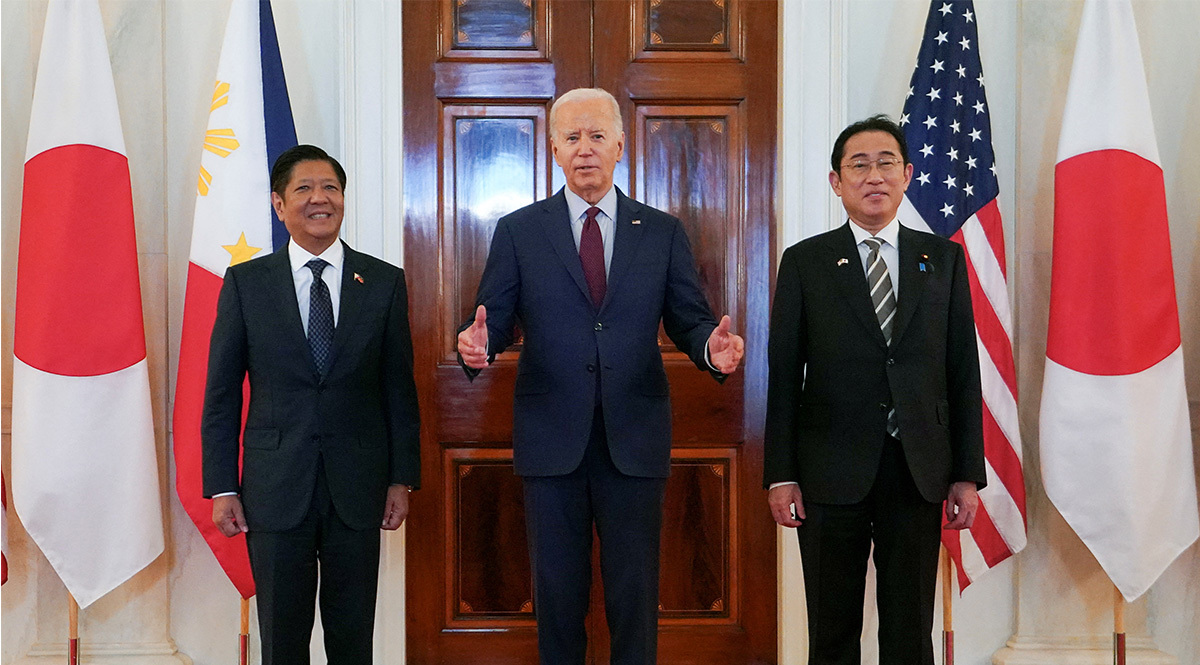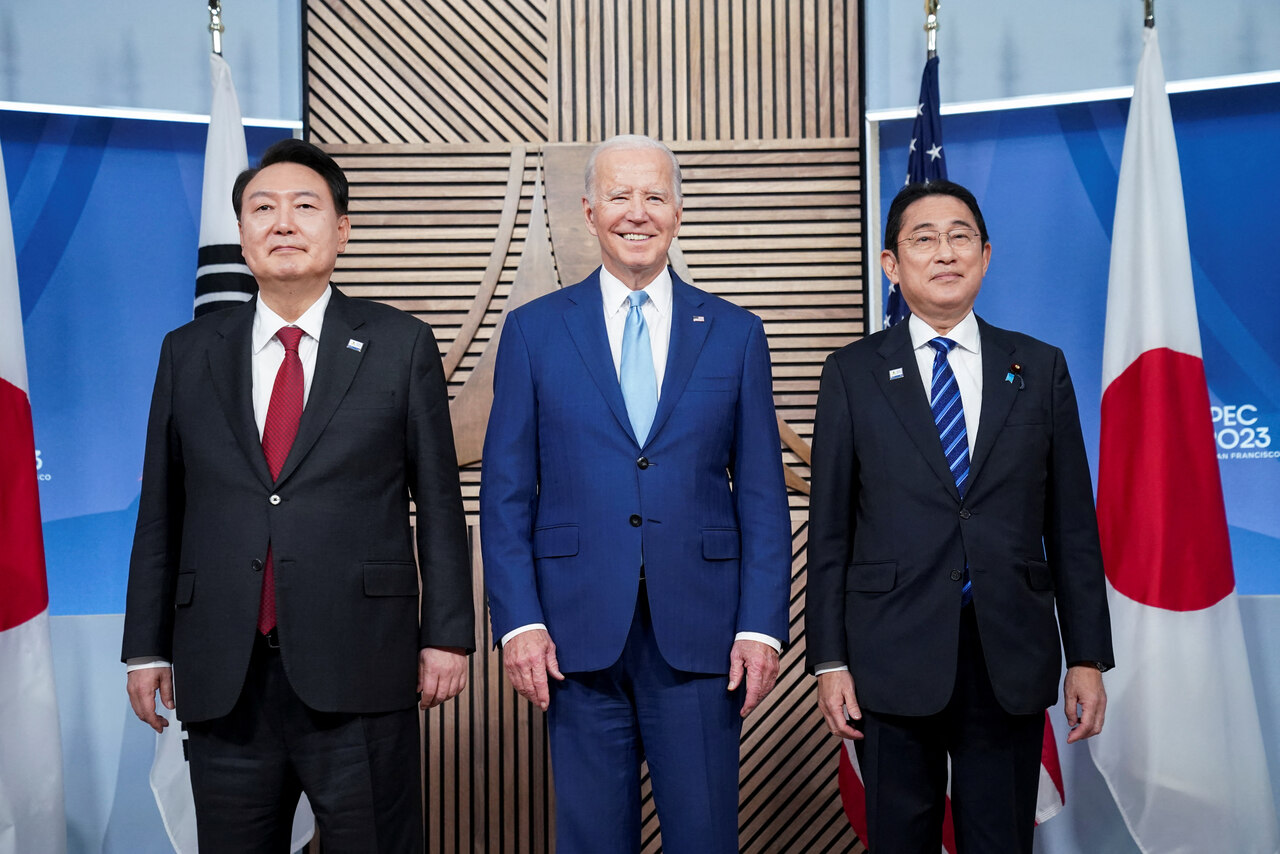What are the Regional and Global Consequences of U.S.-Japan Cooperation?
The first state visit of the Japanese prime minister to the United States in nine years served to adjust mutual relations to the threats and challenges arising from China’s growing potential, the development of North Korea’s nuclear and missile arsenals, and Russia’s aggression against Ukraine. It also was an opportunity to strengthen multilateral cooperation in the Pacific, as exemplified by the first-ever trilateral summit of the leaders of the U.S., Japan, and the Philippines. Further bilateral and multilateral cooperation will contribute to the stabilisation of East Asia, but may be hampered by a possible isolationist course in U.S. foreign policy after the presidential elections.
 Kevin Lamarque / Reuters / Forum
Kevin Lamarque / Reuters / Forum
On 8-14 April, Japanese Prime Minister Kishida Fumio paid a state visit to the United States. It was the second visit of this rank in history (the first was in 2015 by Prime Minister Abe Shinzo). During it, Kishida met with President Joe Biden and delivered a speech to the joint houses of Congress. Moreover, on 11 April, together with Biden and the President of the Philippines Ferdinand Marcos Jr., he took part in the summit of the leaders of these countries.
Japan—a Global Partner of the U.S.
The talks between Japan and the U.S. were dominated by security issues. Their cooperation in this area is intended to maintain the law-based international order in the region defined by both countries as the Indo-Pacific and elsewhere. It is also a response to China’s aggressive actions in the South and East China seas and in the Taiwan Strait, the development of North Korea's nuclear and missile arsenals, and Russia’s cooperation with the North Korea and China.
Biden and Kishida announced improved coordination of activities between the command structures of the Japan Self-Defense Forces (JSDF) and American troops stationed in Japan to increase interoperability and improve planning during peace and war. However, they did not establish a joint command, as, for example, in the U.S.-South Korea alliance. However, they announced plans to jointly develop and produce military equipment, including missiles. Japan’s credibility as a key U.S. ally on both a regional and global scale is strengthened by the evolution of its security policy. It includes, among others, increasing defence spending to 2% of GDP in 2027, establishing a JSDF Joint Operations Command by 2025, loosening restrictions on the export of military equipment to friendly countries, developing long-range missile capabilities, and implementing regulations on economic security.
Japan hopes that the U.S. will continue to play a key role in the world and intends to support it in this. At the U.S. Capitol, Kishida expressed concern about isolationist sentiment in the U.S. While referring to the connections between the situation in the Pacific and in Europe, he pointed to the need to continue to support Ukraine. He also declared further deepening of economic and technological cooperation with the U.S., the framework of which was set by Biden’s summit with Prime Minister Suga Yoshihide in 2021. Japan, which is the largest foreign investor in the U.S. ($800 billion of foreign direct investment, providing 1 million jobs), intends to develop ventures, among others, in electromobility. For example, Toyota wants to increase its expenditures on the construction of electric car battery production plants in North Carolina to $13.9 billion.
The U.S.-Japan Alliance as an Impulse for Multilateral Cooperation
The U.S.-Japan Alliance is the basis for strengthening multilateral security cooperation in the Pacific and beyond between the United States and its allies and partners. Trilateral and quadrilateral formats embrace cooperation between the U.S. and Japan, including with South Korea, the UK, Australia and India (as part of the Quad). In a joint statement, Biden and Kishida also signaled the possibility of Japan cooperating with AUKUS in the development of modern military capabilities.
The latest multilateral cooperation format was created by the U.S., Japan, and the Philippines, officially inaugurated with the first leaders’ summit. They emphasised that cooperation between the three countries is based on values, including democracy and the rule of law. The summit was primarily a political response to violations of the status quo in the South and East China seas by China, acting below the threshold of war. In recent weeks, this has been especially visible in the South China Sea where Chinese vessels have used water cannons to obstruct the operations of Philippine ships sailing in waters that are, under international law, the territory of the Philippines. Such incidents have led to Sino-Philippine diplomatic tensions. During the summit in Washington, President Biden confirmed the U.S. alliance commitments, which include providing military support to the Philippines in response to an armed attack, and indicated that they apply to units operating in the South China Sea. The three leaders also declared support for peace and stability in the Taiwan Strait.
One of the main areas of trilateral cooperation is maritime security. Since 2023, the U.S., Japan, and the Philippines have been conducting joint exercises in the South China Sea (the last one, organised with the participation of Australia, took place a few days before the summit). Further cooperation is possible thanks to the strengthening of bilateral ties between the Philippines and the U.S. during the Marcos tenure (including the provision of access to four new bases to the American army last year, increasing their total number to nine) and Japan, which supplies equipment to the Philippine Coast Guard and is negotiating an agreement on mutual access to military facilities.
Cooperation in the field of security is to be complemented by closer cooperation in the economic sphere. Ahead of the leaders’ summit, the first-ever trilogue of trade and industry ministers took place. The leaders announced plans to build the Luzon Economic Corridor, the aim of which is to support the socio-economic development of the Philippines, among others, through infrastructure investments. They also announced closer technological cooperation (e.g., in telecommunications, including the open radio access network, Open RAN), for the benefit of climate and clean energy, and strengthening the resilience of supply chains. However, there was no indication of specific initiatives in these areas, for example, in the field of critical raw materials, such as nickel, necessary for the production of batteries for electric cars, of which the Philippines is an important exporter.
Conclusions and Perspectives
Kishida’s visit to the U.S. confirmed Japan’s role as a global partner of the United States, extending its involvement beyond the Pacific, as evidenced by, among others, support for Ukraine. The summit of the leaders of the U.S., Japan, and the Philippines was a manifestation of American efforts to expand cooperation on security and economic development with allies in the Pacific to include further multilateral mechanisms. Building a network of mutually supporting countries is intended to support the stabilisation of the region and prevent the effects of changes in American foreign policy. Former president Donald Trump’s possible victory in the upcoming elections may again increase neo-isolationist tendencies in U.S. foreign policy. The summit was also a signal to other countries in the Pacific and East Asia about the United States’ readiness to be involved in this part of the world and to act as a counterweight to China, for example, in infrastructure development.
In the case of Japan, the direction of cooperation will be maintained despite Kishida’s probable departure in the coming months. Due to corruption scandals in the ruling Liberal Democratic Party, he has less than 20% support in opinion polls and will probably lose the leadership in the September intra-party elections, and thus cease to be prime minister. In turn, the Philippines, after trying to tighten relations with China during the presidency of Rodrigo Duterte in 2016-22, and due to China’s aggressive actions in the South China Sea, will continue to strengthen security cooperation with the U.S. and Japan, as well as other partners, such as Australia.
The U.S.-Japan alliance faces the challenge of further increasing coordination and interoperability, including with partners such as the Philippines. This will serve to develop the most efficient mechanisms for responding to Chinese activity below the threshold of war and possible simultaneous crises in several places at the same time (e.g., the Taiwan Strait, the South and East China Seas and the Korean Peninsula). Coordination between the Japanese and American commands will be tightened, although the JSDF will not be subordinated to the U.S. in the event of a conflict. The announcement of further joint exercises of the navies and coast guards of the U.S., Japan and the Philippines may provide an opportunity for EU Member States present in the Pacific to join them.
The directions of foreign and security policy of Japan and the Philippines create the basis for expanding Poland’s cooperation with these countries to include a political and military dialogue on the relationship between the European and Pacific security environment, supporting Ukraine (including through the purchase and supply of weapons) and responding to possible changes in the U.S. foreign policy. Japan’s cooperation with the U.S. in the production of military equipment is also worth monitoring. For example, Patriot systems produced under an American license in Japan have already been exported to the U.S., and from there to Ukraine.






